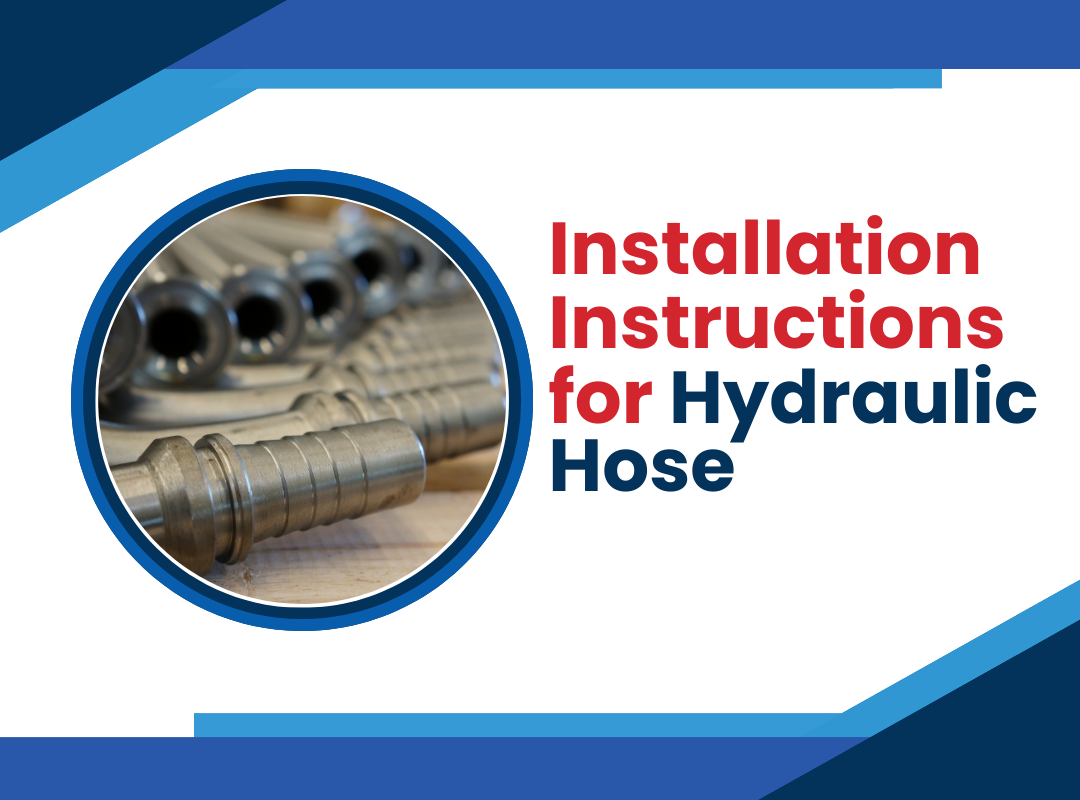Installation of Hydraulic Hoses is a crucial step in assuring the dependability and efficiency of your hydraulic equipment. In many systems, flexible hoses are more flexible than rigid pipes and are simpler to route and build. To maximize the usefulness of the hose assembly and prevent excessive pressure losses, there are certain rules that must be followed when installing hydraulic hoses.
Avoid Hose Twist When Installing Hydraulic Hoses:
If you want the hose to last and lose little pressure, avoid twisting it. Only one direction should be used to bend a hydraulic hose. Additionally, keep in mind that later twisting may be brought on by moving components.
A hydraulic hose’s labeling or lettering might serve as a reference point to keep it from twisting. If the hose starts to twist, grab the ends and use a set of wrenches to tighten the connections once again. While the other tightens the connection, one wrench stops the hose from twisting. The term “double wrenching” describes this.
Selecting the Appropriate Bend Radius:
Never utilize a bend radius for Hydraulic Hose installation that is smaller than what is recommended for that particular hose type. The Hydraulic System will experience pressure losses if the radius used is smaller than necessary, which could potentially shorten the hose’s lifespan. Although they can be used, tight curves might present problems in the long run.
Another thing to keep in mind is that a straight stretch of hose around two times the outside hose diameter should come before any bends after a ferrule, which is a metal band that supports the hose and/or connects two sections of hose. If this rule is broken, fast-moving fluid will hit the bend and finally collapse the core tube in addition to pressure losses.
Also Read – The Main Factors of Hydraulic Pump Failure
Installation of Hydraulic Hose During Hydraulic Hose:
The hoses will move once the hydraulic system is turned on. Careful bending of the hoses—using the proper bend radius, of course—can prevent excessive compression or tension. Additionally, this helps to absorb any sudden impact loads that can happen as the system starts up.
Installation and Length of Hose:
Hose assemblies should be long enough to meet the minimum bend radius. Never cut hoses too short so that they don’t form the proper angle at the connections. In order to accommodate any expansion or contraction when the hydraulic system is in use, it is also crucial to lengthen the hoses. Hoses’ lengths can often change by 2% to 4% when under pressure. This implies that a 24-inch hose’s length could vary by an inch. The hose should be cut a little longer than necessary, even if it will only be used for a straight-line connection.
Abrasion Defense:
When routing flexible hoses, it’s crucial to keep them from coming into contact with anything that might rub up against them. Abrasion, which can result in wear and a leaking hose, would occur, for instance, if a hose was run next to a moving or vibrating component. Abrasions can occur when hoses brush against one another. One solution to abrasion issues is careful routing. Consider clamping if moving the hose away from the problematic area is not a possibility.
Ensure Hoses Are Clean:
Contamination is the primary reason for hydraulic system failure. The replacement Hoses must be carefully cleaned before being installed. When the hose is cut to fit an assembly or during the manufacturing process, hydraulic contamination might happen. The simplest method for cleaning shorter hoses is to use high-pressure air to blow any contaminants through the hose and out the other end. Longer hoses can be cleaned using a suitable fluid. However, any utilized fluid must be filtered prior to avoid adding further impurities.
Another technique for cleaning up hoses involves blasting a foam projectile into the line with pressurized air or inert gas.


